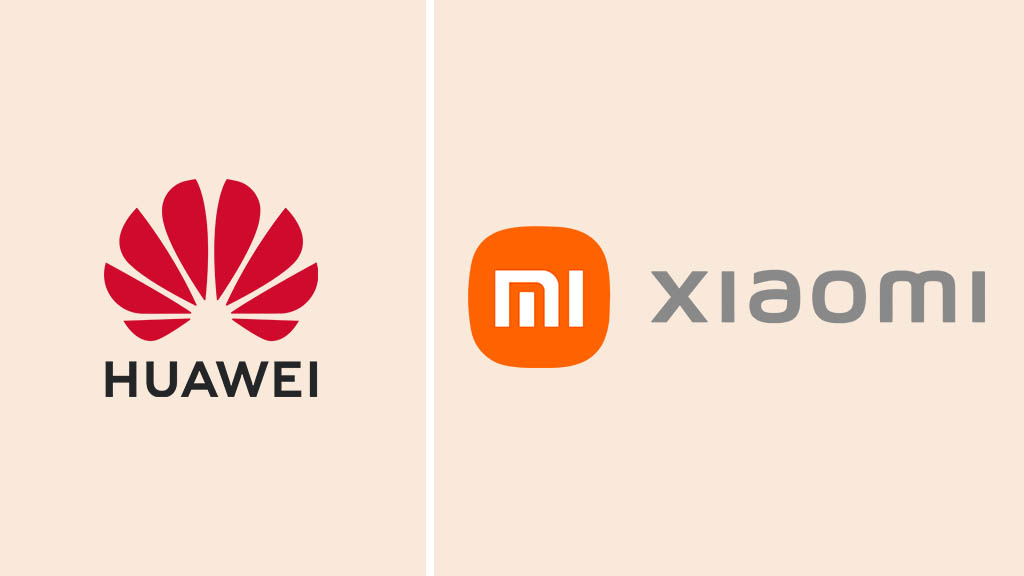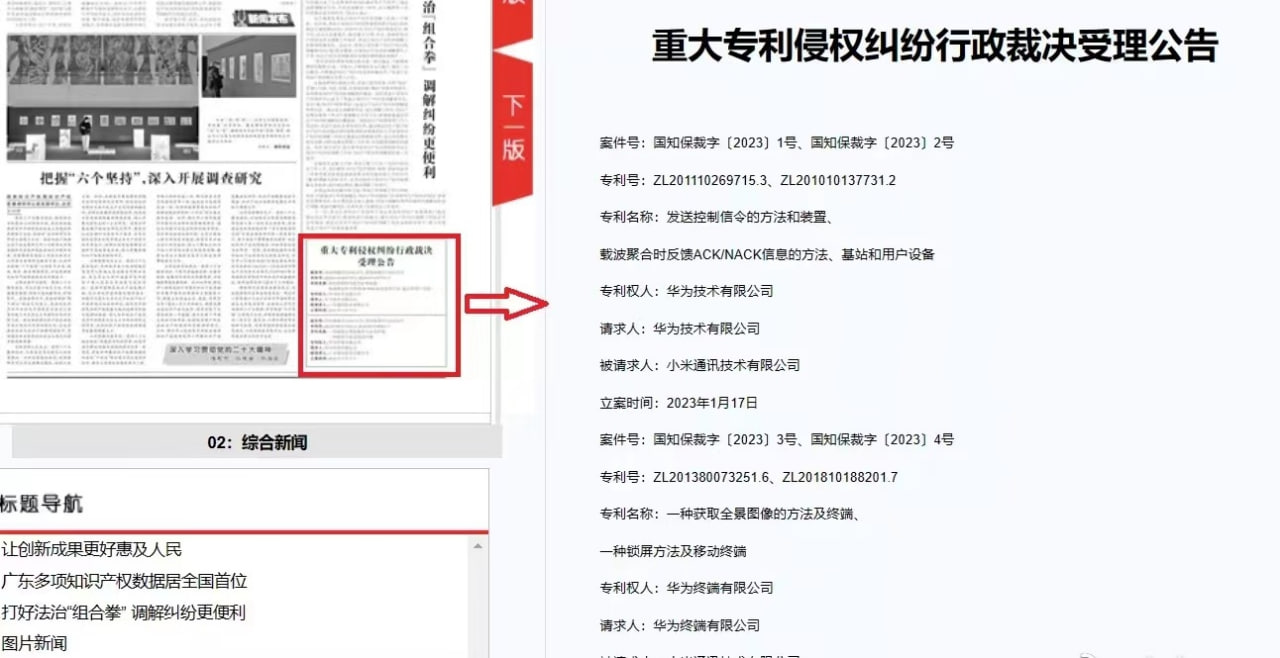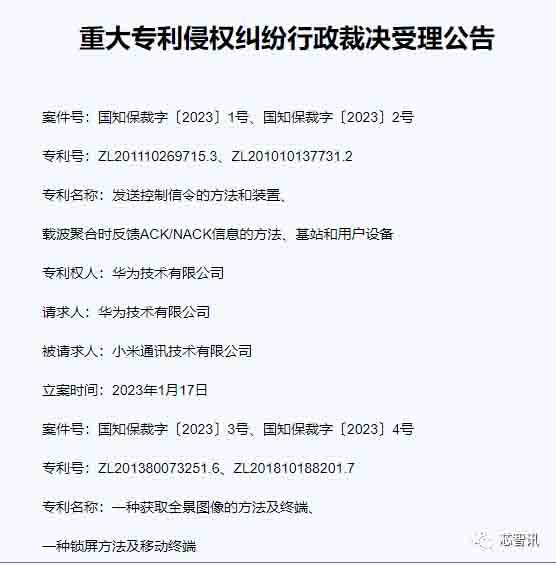News
Huawei vs Xiaomi: Patent dispute explained

All of the smartphone makers are launching new devices but there’s a patent dispute going on between Huawei and Xiaomi. In that case, this encyclopedia will explain what’s going on among these two titans.
What’s the matter:
Earlier this year, Huawei filed a patent rights infringement suit against Xiaomi in China and there are four patents that are at the core of this infringement case.
- Method and device for sending control signaling (patent number: ZL201110269715.3).
- Method for feeding back ACK/NACK information during carrier aggregation, base station, and user equipment (patent number: ZL201010137731.2).
- A method and terminal for obtaining panoramic images (patent number: ZL201380073251.6).
- A screen locking method and mobile terminal (patent number: ZL201810188201.7).

Xiaomi’s response:
In March, Xiaomi responded that the two parties are actively negotiating on patent licensing. China’s intellectual property protection system provides a variety of resolution mechanisms, including administrative and judicial mediation. It is an industry practice to resolve licensing issues through third-party mediation mechanisms.
Both Huawei and Xiaomi believed that intellectual property licensing and cooperation are conducive to promoting innovation and the public interest, and also that mediation is an effective channel to help achieve licensing. While continuing to actively negotiate, the two parties seek to use a variety of mediation mechanisms to assist The parties reached an agreement.
However, the negotiations didn’t work and Xiaomi moved to file a request for patent invalidation. For those who don’t know, the accused party could file a patent invalidation request in order to itself as the owner of the disputed patent. If proven, the case will be dismissed.
Invalidation Request:
It is reported that the “ZL201810188201.7” patent that Xiaomi initiated the invalidation request is titled “A Screen Locking Method and Mobile Terminal”. The patent abstract shows that the embodiment of the present invention discloses a screen-locking method.
Including: Receiving an instruction from the user to light up the screen of the mobile terminal, and lighting up the screen of the mobile terminal; in the lock screen state, calling the first picture from the local pictures stored in the mobile terminal to replace the preset lock screen background, wherein, The first picture is downloaded or photographed by the user, or pushed to the mobile terminal by the server according to the preference of the user.
The embodiment of the invention also discloses a mobile terminal. With the present invention, the automatic switching of the lock screen background can be realized in the lock screen state, and the user can see the new lock screen background as long as the screen is turned on, thereby improving the variability and switching efficiency of the lock screen background, and improving the user’s awareness of the lock screen background. The freshness of the lock screen.

In addition to this patent, Xiaomi has also initiated invalidation applications for three other patents against Huawei. These are:
- Patent No. ZL201110269715.3, “Method and device for sending control signaling”
- Patent No. ZL201010137731.2, “Method for Feedback of ACK/NACK Information During Carrier Aggregation, Base Station and User Equipment”
- Patent No. ZL201380073251.6 “a method and terminal for obtaining panoramic images”
Cases No. 1 and No. 2 involve 4G/LTE technology, these are standard essential patents (SEPs). The other two cases involved mobile cameras and unlocking features, which belonged to non-SEP patents.
Court Hearing:
Xiaomi’s request for invalidation of Huawei’s patent “ZL201810188201.7” will be heard on July 21. The oral hearing is a method in invention litigation. Both parties will orally state their statements and reasons to prove the validity of their patents in court.
Specifically, the invalidation party proposes to the invalidated party to invalidate its patent and initiates invalidation proceedings. The invalidated party makes a defense, which is realized by the representatives of both parties presenting their arguments in court.
At the opening ceremony of the 2022 World Design Capital Conference last year, Huawei Consumer Business Group CEO, Yu Chengdong complained about patent infringement issues.
He said that many industries, especially some companies in China, are copying our designs. Including some of our patents, everyone uses it. They aren’t paying patent fees and using them directly, and then claim that they are their own patents, and even copy some things directly.
Why Huawei filed a dispute?
The patent dispute between Huawei and Xiaomi is part of what Yu Chengdong said in the above paragraph. It wasn’t instant for Huawei to choose and sue some other companies.
Patent No. 1 and No. 2 are the standard essential patents of 4G LTE, and the user “must” pay royalties to the owner. To recall, In 2016, Huawei sued Samsung for the two patents, and won the case. So why did it start to sue Xiaomi today, 7 years later?
It may be about time and situations. Around 2018, Huawei smartphones reached everywhere, and even surpassed Apple to become the world’s second-largest phone manufacturer.
Last time it was Samsung for infringement and this time, it’s Huawei’s Chinese counterpart. Yet, the core reason could be Huawei’s aggressive approach is patent rights and revenue. Since Huawei is one of the top patent holders in the world, the company is exploring more ways to collect its fair share of patent royalties.
Still, patent disputes and invalidation is a common practice between mobile and other tech companies. But the outcome of the patent dispute between Huawei and Xiaomi will surely send some positive messages to the entire Chinese and global mobile industry.






